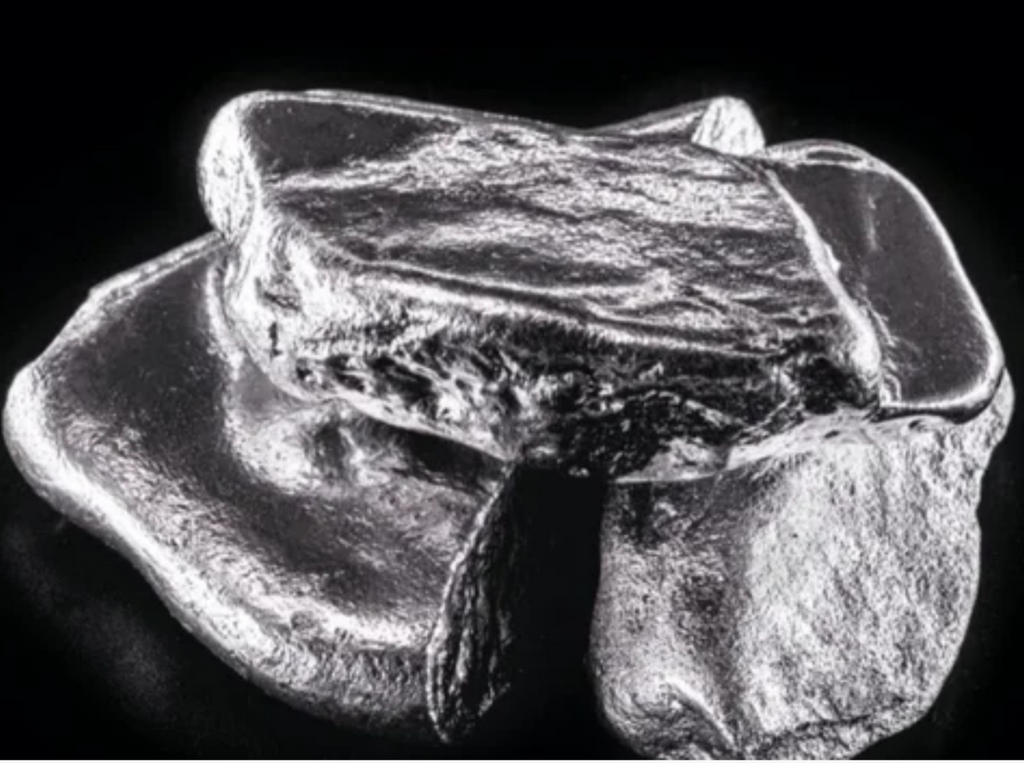What is White Gold
In the simplest of terms, white gold is basically gold that looks white. But isn’t gold supposed to be “golden”? Yes, it is, when it is pure, or almost pure. White gold is not pure gold. The white color in white gold comes from other metals (nickel for example) mixed with it. There are various types of white gold out there, with different gold percentages in each.

When the US Government announced that platinum was a strategic material during World War I, white gold became very popular. As platinum was out of bounds from civilian use, white gold became a very common material used to make engagement rings.
Pros and Cons Of White Gold
There is no universal rule that white gold is better than silver or vice versa. Depending on your needs, each metal has its advantages. While some people prefer white gold for certain pieces, others may opt for silver. Let’s take a closer look at the pros and cons of white gold.

What is Silver
Silver is one of the 118 elements found naturally in the environment. It is a soft, shiny metal. Silver has been used in different kinds of Jewelry since ancient times. In Ancient Egypt, pharaohs, kings, queens, and the other members of royal families exclusively used silver jewelry. Silver jewelry was also very popular among the wealthy in ancient Greece.

Pure silver is not very durable, just like pure gold. That’s why most of the time pure silver is alloyed with other metals. The most popular silver alloy is called sterling silver. Sterling silver contains 92.5% silver.
Pros and Cons Of Silver
Just like with white gold, silver has both advantages and disadvantages. So what are they? Let’s find out.

WHITE OLD VS SILVER: BASIC CHARACTERISTICS
White gold is not found naturally.It's a man-made alloy that combines gold with other white metals such as nickel, palladium, or platinum.
The amount of gold in white gold varies but is often measured in karats. Common compositions are 14K or 18K, indicating the proportion of pure gold to other metals. This mixture not only strengthens the gold but also alters its color to a paler shade, which is further enhanced by a surface coating.
Silver, on the other hand, is a natural element with a distinct shiny, white-gray appearance. It is softer than many other metals used in jewelry making. For durability and to reduce tarnishing, silver is typically alloyed with other metals, usually copper.
Sterling silver, the most common type used in jewelry, consists of 92.5% silver and 7.5% other metals. This standard ensures a balance between maintaining the metal's beauty and improving its practicality for daily wear.
PHYSICAL PROPERTIES
The allure of white gold in jewelry can be largely attributed to its rhodium plating. Rhodium, a metal more expensive than gold itself, is used to coat white gold items, giving them a reflective white surface that resembles platinum.
This plating not only enhances the aesthetic appeal of white gold by increasing its shine but also provides a protective layer that increases its resistance to scratches.
But this rhodium layer can wear off over time, exposing the darker material beneath and requiring re-plating to restore the item's original appearance.
This necessity doesn't detract from white gold's overall durability. It remains a preferred choice for engagement rings and other jewelry expected to withstand frequent use.
BRIGHTNESS
Silver has a natural brightness comparable to that of white gold. But it faces its challenges with tarnish. Exposure to air and certain chemicals can cause silver to oxidize, leading to a blackened surface.
This effect, although often unwanted, can be cleaned and polished away with proper care. In terms of hardness, silver is less durable than white gold. It is more susceptible to scratching and deforming under pressure, which makes it less ideal for certain types of jewelry that are subject to heavy wear.
Despite these differences in durability and maintenance requirements, both metals are cherished for their unique properties and aesthetic qualities. White gold and silver each serve different preferences and purposes in the world of jewelry and beyond, catering to varied tastes and needs.
Conclusion
Before you purchase any jewelry, you should consider all the aspects, not just the base metal it comes with. White gold and sterling silver are usually used to make the base, and most pieces of jewelry are incomplete without gemstones. White gold or silver, no matter which one is your preferred choice, make sure you get great looking, high-quality gemstones.
When it comes to gemstones, very few can match the elegance and quality of Zuanfa Jewelry's moissanite diamonds. Zuanfa Jewelry's moissanite diamonds are not only beautiful but also ethically produced. On top of that, our jewelry costs significantly less than traditional diamond ornaments.
FAQs:
Is silver or white gold more durable?
White gold is more durable than silver. While silver and gold are soft metals, when you take a soft metal in its pure form and combine it with other metals, you get an overall more durable precious metal, as is the case with white gold.
Is silver or white gold more expensive?
White gold is typically more expensive than silver.
Can you tell the difference between silver and white gold jewelry?
While those with a trained eye can spot the minute differences between these two metals’ hues, the average person won’t be able to tell much of a difference between silver and white gold jewelry at all.

